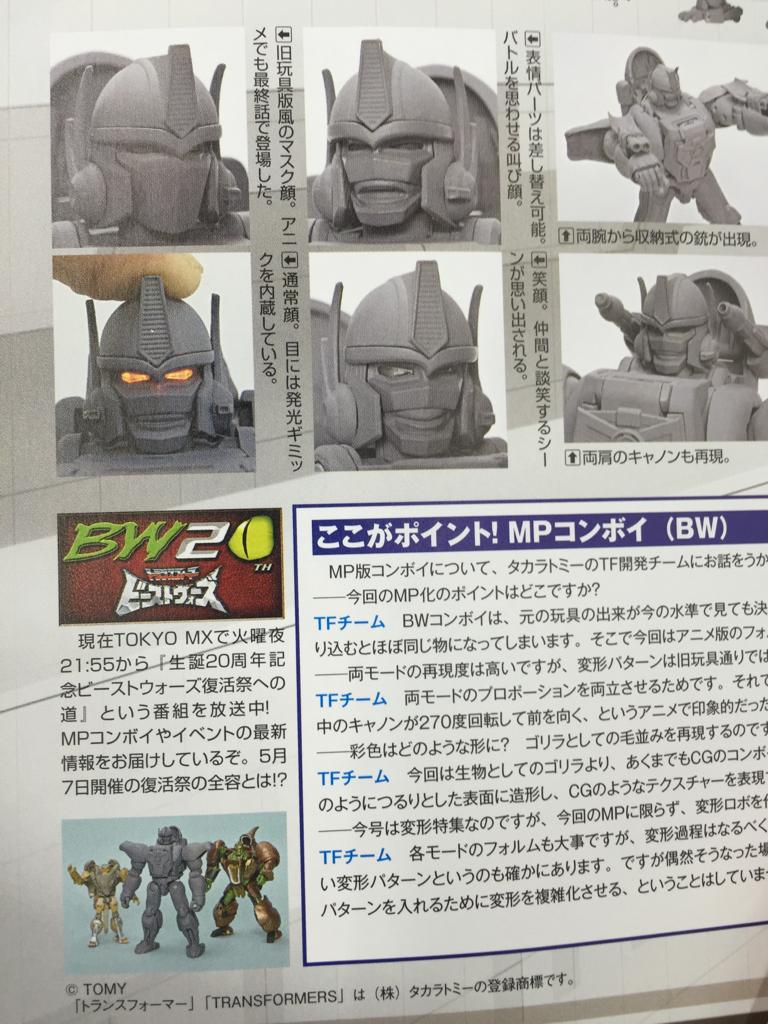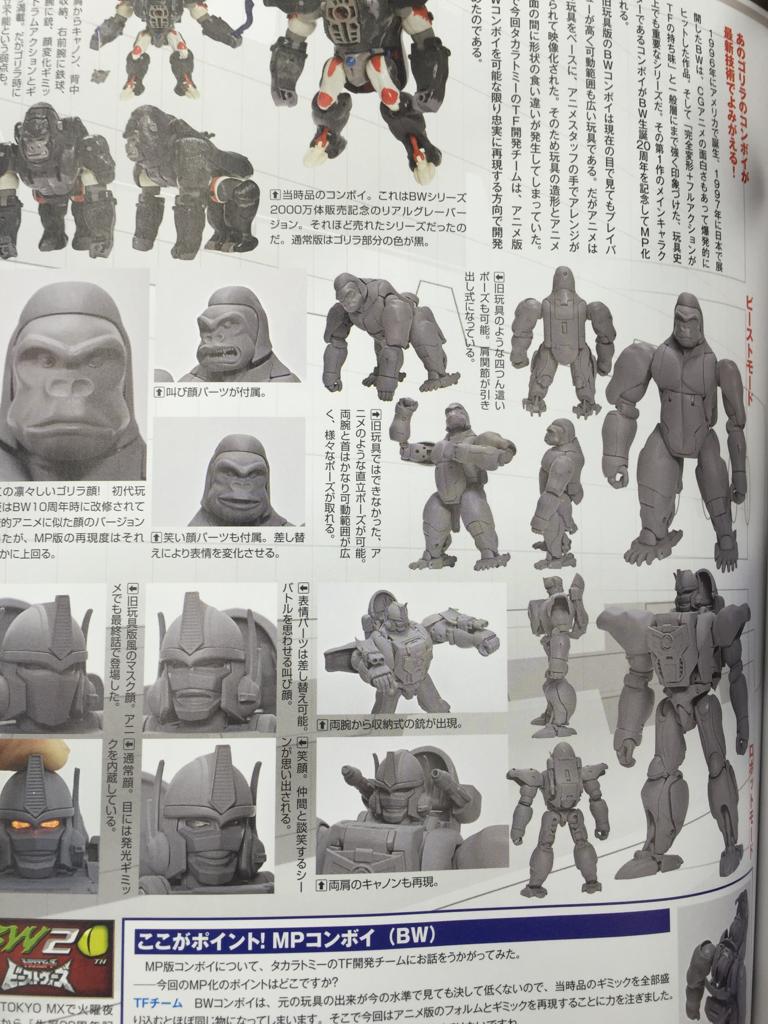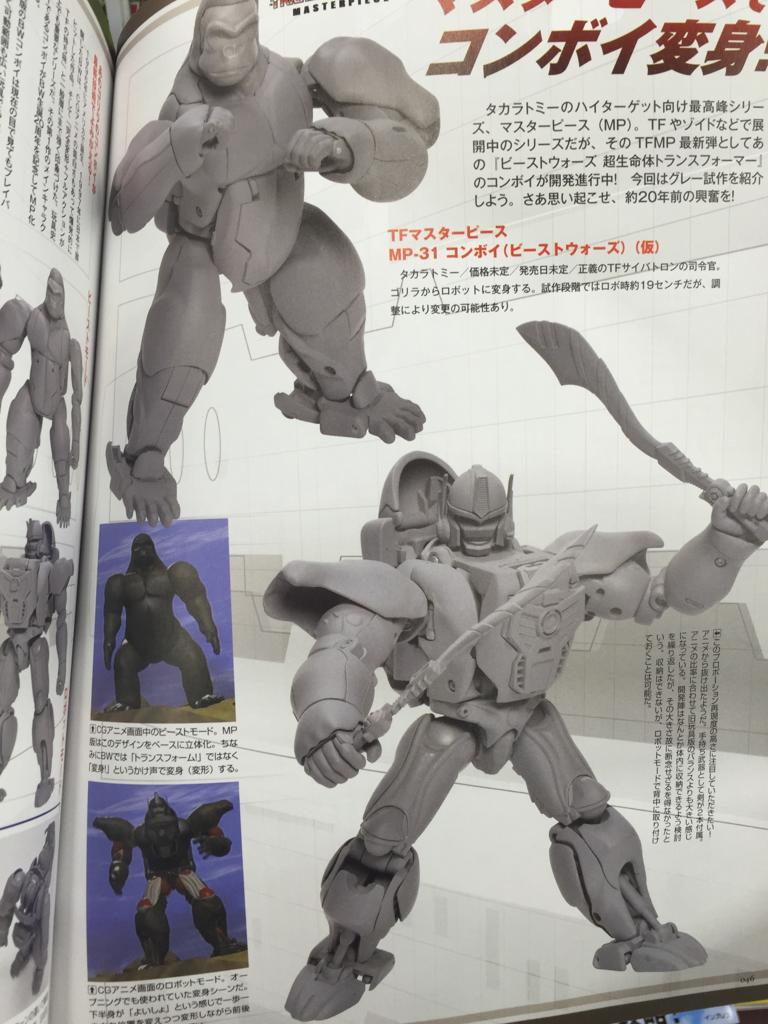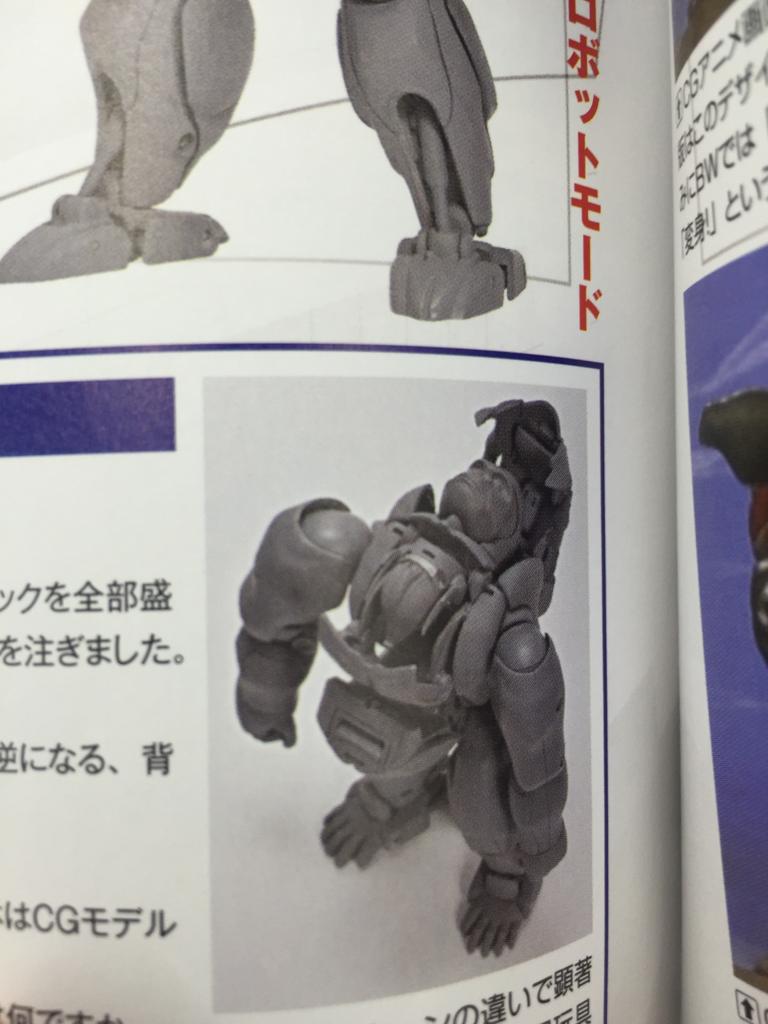![1999]()
1999 was the fifteenth anniversary of the Transformers brand, an occasion that went largely unmarked save for a recognition at Botcon 1999 (which was also the fifth anniversary of Botcon). Beast Wars reached its climax, concluding with a finale written by long time Transformers comics scribe Simon Furman, and the toyline carried on and developed the Transmetals theme with Transmetal 2s. Japan meanwhile got a double-whammy of new series this year with a dub of Beast Wars seasons 2 and 3 as “Beast Wars Metals” as well as the Japan-only series Beast Wars Neo, which had its own toyline populated almost exclusively with new and Japan-only toys. Also this year saw the debut of a little thing called Beast Machines, though – in the first instance of a rather unfortunate trend – the toys for this new toyline would not hit shelves until the first season of the show was almost done.
But before we throw ourselves into the Beast Wars sequel there is the small matter of the final year of Beast Wars to talk about! Beast Wars season 3’s final episodes aired in 1999, kicking off in the last week of January 1999 with Feral Scream Part 1. Feral Scream was the episode which debuted the new Transmetal 2 Transformers in the show. It kicked off with Megatron resurrecting the deceased Dinobot as a cyborg raptor – something hinted at in the previous episode, Cutting Edge. Cheetor, who was investigating with Depth Charge, was exposed to the energies of the mysterious “Transmetal 2 driver” Megatron used to create his Dinobot clone and began an evolution of his own. By the time the episode concluded, Cheetor was also a Transmetal 2 and the Maximals had a new foe in the form of a fully Predacon clone of their old friend.
In Crossing the Rubicon, it was the turn of Blackarachnia to undergo a Transmetal 2 evolution. She was one of the first Protoforms to have been “turned” by a Predacon shell program, and as a result of her leaving the Predacons for the Maximals, the shell program was beginning to malfunction and endanger her life. In one of the darkest moments of the season – notable considering this season was lighter hearted than season 2 – Silverbolt, believing Blackarachnia to be dead, went out to murder Tarantulas in cold blood. Blackarachnia however survived, revived by the Transmetal 2 driver she had retrieved and transformed into a Transmetal 2. Megatron would follow suit in the next episode, Master Blaster, where he absorbed the spark of the original (Generation 1) Megatron and underwent an evolution into a Transmetal 2 “Dragon Megatron” form.
The series concluded with Other Victories and the two-part Nemesis. In Other Victories the aliens who had been recurring antagonists throughout the series, using the bodies of Tigatron and Airazor, forged an avatar for themselves, named Tigerhawk. Tigerhawk’s arrival led to the destruction of the Predacon base, and by the time the episode concluded, Tarantulas had been destroyed – by his own weapon intended to kill the aliens no less. His legacy endured, though, as before his death he had found the warship used by Generation 1 Megatron, the Nemesis. In the finale, Megatron took to the ship and set about destroying the Ark with its firepower. The Maximals raced to stop the ship – with Depth Charge and Rampage killing each other in a savage final duel, and Tigerhawk sacrificing himself to buy time for the Maximals. In the end it was the Dinobot clone – who was restored to the original Dinobot’s personality with the death of Rampage – who saved the day and destroyed the Nemesis bridge, but not before Optimus Primal and Megatron had one last duel.
These final episodes were progressively more epic as the tension mounted, but there is one episode that was alleged to be planned, but dropped because it was considered to be too dark. That episode was Dark Glass, wherein Rattrap tried to install a backup of the original Dinobot’s personality in the evil clone, and would have helped explain where the sudden shift in Dinobot 2’s personality came from in the finale. It was not the only thing that was cut, though, as Simon Furman indicated that in Nemesis it was originally intended to have had the Decepticons Thrust, Dirge and Ramjet join the fray. Alas this was not to be, and we would have to wait a few more years to see Decepticons taking flight once more.
![]() 1999 introduced the cyborg Transmetal 2s, including a healthy mix of existing characters upgraded such as Dinobot II, Cheetor, Blackarachnia and a dragon Megatron. They shared the line with all-new additions like Jawbreaker the hyena, Scarem the beetle and Optimus Minor. Scarem here demonstrates the “spark crystal” gimmick added to these releases.
1999 introduced the cyborg Transmetal 2s, including a healthy mix of existing characters upgraded such as Dinobot II, Cheetor, Blackarachnia and a dragon Megatron. They shared the line with all-new additions like Jawbreaker the hyena, Scarem the beetle and Optimus Minor. Scarem here demonstrates the “spark crystal” gimmick added to these releases.[/size]
The Beast Wars toyline rebranded again for 1999, this time introducing Transmetal 2’s across all four size classes – Basic, Deluxe, Mega and Ultra. There were a mix of existing characters upgraded with new forms and all-new characters introduced in this series. The Transmetal 2’s dropped the third modes from the Transmetals and instead introduced “spark crystals” – concealed panels on each toy could be opened to expose a clear plastic dome with the faction symbol of the robot on it, with Maximals getting green sparks and Predacons getting purple ones. This concept would endure through the Beast Machines line.
The Transmetal 2 toys were all cyborg beasts and were some of the most asymmetrical robots released in the Transformers line ever, due to the blending of organic and mechanical parts in both modes. While largely fun releases, they never quite captured the sheer essence of coolness that came with the Transmetals. The larger toys of the year included a Mega class Blackarachnia, and Ultra class releases Tigerhawk (a Transmetal 2 Fuzor) and Dragon Megatron. The dragon Megatron was a particular awesome piece – he had an impressive wingspan and was the only mythical creature in the line (though the Dr Moreau-ish Fuzors could be considered to be like chimeras).
Beast Wars Neo opening credits for the second part of the series. Uploaded to Youtube by walruslaw[/size]
Japan meanwhile was pressing ahead with their Beast Wars sidestory with a cel-animated series, Beast Wars Neo. Neo was a sequel to Beast Wars Second, picking up on the quest to recover the Angolmois energy. Following the events of Beast Wars Second the Angolmois energy was sealed into capsules which were scattered across the galaxy. A Cybertron force of new recruits was placed under the command of a one-robot army Big Convoy and were tasked with recovering the Angolmois capsules. Opposing with the Cybertrons were a new force of Destrons, under the command of Magmatron. As the series progressed both sides came into contact with a third faction, the Blentrons – the first time a third faction was depicted in the fiction. The Blentrons, it was revealed, were heralds of Unicron, and Angolmois energy was Unicron’s very lifeforce. Unicron himself arrived, having taken over the body of Galvatron as a new vessel for his evil essence. Cybertron and Destron alike teamed up in the face of their common enemy, whose ultimate goal was to seize control of Seibertron itself as his new, planet-sized body. In the end the united forces of the Cybertrons and Destrons – including a few returning allies from Beast Wars Second – were able to defeat Unicron, with Big Convoy using his Matrix to charge up his Big Cannon and deliver the final blow.
![]() Beast Wars Neo featured an eccentric selection of beast modes. Shown here are the toys for Destorons Sling, Bazooka, Saberback, Dead End and Magmatron, who all turned into dinosaurs or other prehistoric creatures, and Cybertrons Break, Stampy, Corhadra, Big Convoy, Longrack and Mach Kick.
Beast Wars Neo featured an eccentric selection of beast modes. Shown here are the toys for Destorons Sling, Bazooka, Saberback, Dead End and Magmatron, who all turned into dinosaurs or other prehistoric creatures, and Cybertrons Break, Stampy, Corhadra, Big Convoy, Longrack and Mach Kick.[/size]
The Beast Wars Neo show was accompanied by a toyline. Unlike Beast Wars Second, which mostly released non-show toys from the US Beast Wars line, Beast Wars Neo went largely with all-new molds including some very eclectic beast mode choices, such as a rabbit, a giraffe, a penguin and a horse on the Cybertron side, and on the Destron side a slew of prehistoric creatures and dinosaurs including a triceratops, an archaeopteryx, an ammonite, and an ankylosaurus. The leaders of each side, Big Convoy and Magmatron, were Ultra class sized releases. Big Convoy was a woolly mammoth, who was the first Convoy / Optimus Prime toy to feature a removable Matrix. He also featured his signature Big Cannon, a huge weapon that made up the trunk and most of the back of his mammoth mode. Magmatron was an unusual design – he had a single robot mode but like the Duocons and Overlord from Generation 1, he divided into three dinosaurs for his beast mode – Skysaur the Quetzalcoatlus, Landsaur the Giganotosaurus, and Seasaur the Elasmosaurus. The three beast modes could merge into a single, nightmarish Fuzor beast mode as well as the Magmatron robot mode.
Notably, the Beast Wars Neo series were some of the first toys to feature on a line-wide basis the trick of having a robot “skeleton” fold up within a beast mode “shell”, the resulting robots earning the derisive nickname “shellformers”. Many of the releases such as Guiledart the Triceratops had some of the beast mode parts left over, hanging from the robot’s shoulders or back. Like the term shellformers, the left over parts were derisively called “kibble”; and while both terms had likely been coined before Beast Wars Neo, it was at this time that the terms started to enter into the Transformers fandom’s lexicon.
Beast Wars Neo was also the line with the greatest “almost got him” of Transformers history, because it was revealed that a toy of the big villain Unicron had been prototyped for the line. Never produced as the lackluster performance of Transformers in Japan at the time would not have made the cost of production viable, the Beast Wars Neo Unicron (or “Neocron”) would have transformed into the classic planet mode and been around the size of Optimal Optimus. He would, however, have had significant portions of the planet shell on his body including half of his planet mode as a backpack, although this did not stop fans petitioning for the toy’s release.
![]() Beast Wars Metals X-9 Jaguar, aka Ravage, is one of the most sought-after releases from the Metals line.
Beast Wars Metals X-9 Jaguar, aka Ravage, is one of the most sought-after releases from the Metals line.[/size]
Takara followed up the conclusion of Beast Wars Neo in 1999 with Beast Wars Metals, the Japanese dub of Beast Wars seasons 2 and 3. The dub was accompanied by the release of the whole 1998 Transmetals line, along with Fuzors Silverbolt and Quickstrike and the Transmetal 2 characters that were featured in the show, some of them with alternate decos to reflect the on-show appearance. One all-new Japan-only toy was also released – Jaguar, aka Ravage. Like his show model, he was a retool of Transmetal Cheetor with a new head, chest and arms. He stands as one of the most desirable releases from the line, due to the character not getting a release in the US toyline and collectors wanting to finish off their TV show casts.
A trio of videogames were produced in Japan alongside the Japanese shows and toylines. Both the Nintendo 64 and the Playstation got versions of a 3D fighting game based on the Beast Wars Transmetals, while for Japanese fans who wanted some Transformers action on the go, a 2D Transformers fighting game was released for the Game Boy Color.
The Game Boy Color title was only released in Japan. Titled the tongue-twisting “Duel Fight Transformers Beast Wars: Beast Warriors’ Strongest Decisive Battle” it was a 2D one-on-one fighting game, featuring characters from Beast Wars, Beast Wars Second and Beast Wars Neo. There were ten fighters in total, including two secret ones – Beast Wars Convoy, Cheetor and Megatron, Beast Wars Second Lioconvoy, Scuba, Galvatron and Megastorm and Beast Wars Neo Guiledart. A tag-team of Artemis and Moon from Beast Wars Second and Star Upper, a boxing kangaroo Cybertron featured in the Beast Wars Neo manga, were the secret fighters. Star Upper was the winner of a “design a Transformer” contest. It was a fun and easy to pick up game, with the main gimmick being all fighters could transform between modes at the touch of a button, and the characters’ moves and attacks varied based on their alternate forms. The characters also featured super attacks, and notably Megatron, who acted as the game’s boss, would summon most of the season 1 Predacons as a part of his super move. The game also featured some additional mini-games, with other characters like Starscream and BB available to play as in these modes.
The other two games released in 1999 were Transformers: Beast Wars Transmetals. The game was released on both Playstation and Nintendo 64, and while the basic gameplay of the games was the same – both were arena-based 3D one-on-one fighting games – the specifics of each game differed, both in story modes and in selection of characters available. Both games were based on the cast and characters of Beast Wars season 2, and were produced to coincide with the Japanese Beast Wars Metals series. However, the Nintendo 64 version featured individual ending stories for all the characters, rather than an ambiguous faction-specific one for the Playstation version of the game. Both games gave players a selection of Maximals and Predacons to play as, with both versions letting players unlock Blackarachnia, Ravage and Tigatron as secret characters. The Playstation version had Rampage, Quickstrike and Silverbolt among the characters exclusive to it, while the Nintendo 64 version got playable characters including Transmetals Waspinator, Airazor, Terrorsaur and “Starscream” (based on when he possessed Waspinator in Possession). The Nintendo 64 game also had an exclusive end-boss named Megatron X, a chrome, dragon-winged Transmetal Megatron. Both games were fun to play, and both were greatly enhanced when they were released in English by the majority of the voice actors from the show reprising their roles.
Original Fox Kids Beast Machines: Transformers commercial
1999 saw the end of the Beast Wars – but the beast era was far from over! In September 1999 the next part of the Beast era, Beast Machines, began. Beast Machines was set some time after the conclusion of the Beast Wars. The Maximals had returned to Cybertron – but on their return they found the planet deserted, populated only by sparkless Vehicon drones. The Maximals were split up and infected with a virus that mode-locked them in their beast modes. In their efforts to escape, Optimus Primal, Cheetor, Rattrap and Blackarachnia found their way beneath the surface of Cybertron and found the mysterious Oracle, which reformatted the four into new techno-organic forms. It was soon revealed that Megatron had escaped the Maximals and returned to Cybertron first, and had become the leader of the Vehicon army.
At the heart of the series was a clash of ideologies – Megatron’s goal was to create a “perfect” mechanical world, free of organic influence and presumably also free of free will. Optimus Primal on the other hand was steadfast in the duties assigned to him by the Oracle – to establish a balance between organic and mechanical, and bring about the evolution of the Transformers race. The two were both fanatical in their devotion to their goals – to the point where Optimus Primal was endangering Cybertron by unleashing the power of the Plasma Energy Chamber in an attempt to purge the Vehicons. Never before or since had the actions of a protagonist of a Transformers cartoon been so morally grey!
Another key plot point in the first season involved Megatron’s three Vehicon generals, and the missing Maximals Rhinox and Silverbolt. Megatron, finding he needed sparked soldiers to outwit the Maximals, created three Vehicon generals using three of the sparks he had obtained during his campaign – the brutal, thuggish Tankor, the haughty and sadistic Jetstorm, and the brooding Thrust. The Maximal’s quest to find their lost friends led to the discovery that the three generals were in fact corrupted versions of Rhinox, Silverbolt and Waspinator (the latter of whom had found his way back to Cybertron post Beast Wars). The awakening of the dormant Rhinox personality within Tankor led to Tankor’s evolution into a bigger villain rivaling Megatron, as Tankor / Rhinox fully embraced his new dark side and set out to destroy both Megatron and the Maximals.
Season 1 of Beast Machines had a mixed reception – fans did not react well to the way the Maximals “morphed” rather than transformed, and had to learn how to transform. The darker tone with more sparse humorous interludes and the deeper storytelling made the show much less accessible for younger audiences, and fans of Beast Wars were upset by the sometimes radical re-interpretations of their favorite characters from Beast Wars, including a more cowardly Rattrap and Megatron’s shift of goals. The series was notorious for its in media res beginning, and the promise that “all would be revealed”, which again made the story hard to follow. Looking back now, though, fifteen years and several series later, it is easier to appreciate Beast Machines for being a different take on the Transformers story – and a more mature one at that, tackling some deeper themes than your average Transformers show.
![]() Beast Machines Wave 1 – these are all of the toys which were released as a part of the Beast Machines line late in 1999, and included versions of Beast Machines Optimus Primal, Cheetor, Tankor, Jetstorm, Mirage, Scavenger and Buzzsaw
Beast Machines Wave 1 – these are all of the toys which were released as a part of the Beast Machines line late in 1999, and included versions of Beast Machines Optimus Primal, Cheetor, Tankor, Jetstorm, Mirage, Scavenger and Buzzsaw[/size]
The first season of Beast Machines did not have a toyline to accompany it when it first started to air – the first time the ugly trend of the toyline being late cropped up. The first waves of the Basic, Deluxe and Mega size classes were released in late 1999, when season 1 of the cartoon was nearly finished, although the line did not hit its stride until 2000.
The post 30 Years of Transformers in 30 Days – 1999 appeared first on Transformer World 2005 - TFW2005.COM.





















